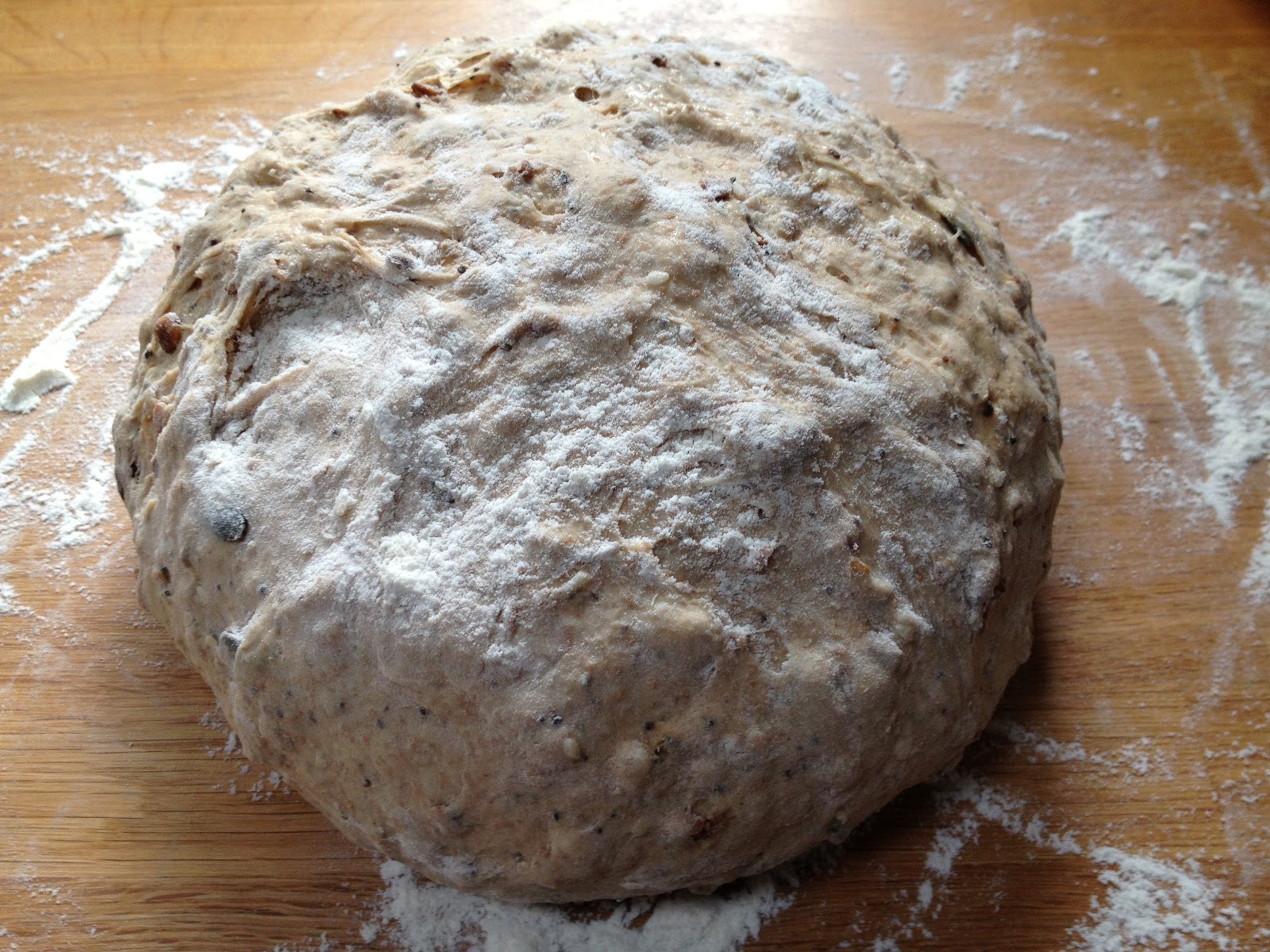I love having people round for meals, although we don't do it that often. It's the opportunity to think a bit more carefully than usual about what we might eat, and an excuse to fiddle around in the kitchen even more than normal.
I'm doing some dippy, mezze type things for a starter - going to give some Pistachio Dukka a go, and may be re-run the Cambodian Wedding Day dip that was such a massive hit a few months ago. There may also be some hummus involved - lemony, ordinary, and beetroot and walnut. These will all be courtesy of Hugh F-W and the wonderful Veg Everyday which I'm still finding hugely inspirational.
To go with of course, I need bread. I could do flatbreads on the day, but however impressive, the thought of flinging dough and flour around at the last minute to make them fresh (which is when they are best) when I could be
This is as opposed to the yeasted loaves I've been making, which I wrote about a couple of months back. This method uses no dried yeast, and just uses the starter as the raising agent. I'm following the method that I learned on my fantastic River Cottage Christmas baking course taught by Aiden Chapman, when we made a delicious cranberry and orange loaf using this method. It is as easy as can be - barely any kneading, more loving stirring, then some folding, over the course of a few hours. The dough can then be proved in the fridge for up to 3 days - and indeed Aiden recommends this to allow the dough to develop more flavour. On the Bread course, we didn't have the opportunity to test this out but the bread was still mighty fine.
A word of warning now, though - If you've got people coming for dinner on Saturday and don't have a sourdough starter going, you're not going to be able to join in I'm afraid, but for easy instructions on making a starter, the post I wrote is here. May be next time. And while we're talking about time, you will need to be able to tend to your dough once an hour over a 5 hour period. The dough can then sit in the fridge for 3 days (as I said above) ready to be baked as you want it.
As my starter had been languishing in in the fridge for a few days, I got it out on Tuesday, got it up to room temperature, chucked half of it away. added some more flour (I used rye) and water to get it going, gave it a good stir and left it to do its thing till Wednesday morning.
For 500g flour, you will need 10 g salt, 125g of your starter and 325g water. You can add in any extras you want.
Malted grain, multiseeded sourdough loaf
1kg malted grain flour (I had some Doves Farm in the cupboard)
20g salt
100g mixed pumpkin seeds, sunflower seeds and sesame seeds
250g sourdough starter
650g water
Put all the dry ingredients in a bowl and stir together. Combine the starter and water, and then carefully mix into the dry ingredients.
Cover the bowl with a tea towel and leave. Yes, that's right, no kneading required!
An hour or so later (actually, I ended up leaving mine for closer to 2 because I had to take the kids to school and walk the dog), literally all you need to do is remove the tea towel, and fold the dough over on itself, then press gently back into the bowl.
Cover and leave for another hour, when you fold the dough again and leave for another hour. Each time you do this you will see that the dough is getting smoother and more coherent as the gluten develops
After the last fold. leave the dough for 2 hours, then tip the dough out on a floured surface and shape it into a round. Leave for 20 minutes.
If you have a suitable proving basket, use that. As I wanted to make one big loaf and my proving basket isn't big enough, I lined a bowl with a tea towel and chucked some flour around liberally.
then shape the dough into a tight ball and pop it in your basket/bowl.
At this point you need to leave your bread to prove for at least 4 hours but you can put it in the fridge for up to 3 days to develop the flavour.
When you are ready to bake, if the dough has been in the fridge, get it out and bring the dough up to room temperature.
 |
| After 2 days in the fridge |
Pre-heat the oven to 220C, and put a baking sheet in to heat up. As with the yeasted loaf, have some semolina to hand to dust the hot baking sheet and also a sprayer bottle with some water in (or a bowl of water to splash round with your hand). You'll need a sharp knife nearby too.
When the oven is at temperature, bring out the baking sheet, dust with semolina and carefully tip the dough on to it. Slash the top of the dough with your sharp knife and get it all back in the oven. The quicker you can do this without sustaining third degree burns, the better... Bake the bread for 20 minutes, then turn it in the oven and bake for another 15 minutes before doing the tap on the bottom thing. if it's sounding hollow, your bread is baked.
Leave to cool on a rack for as long as you can bear before slicing and eating.











 :.
:.